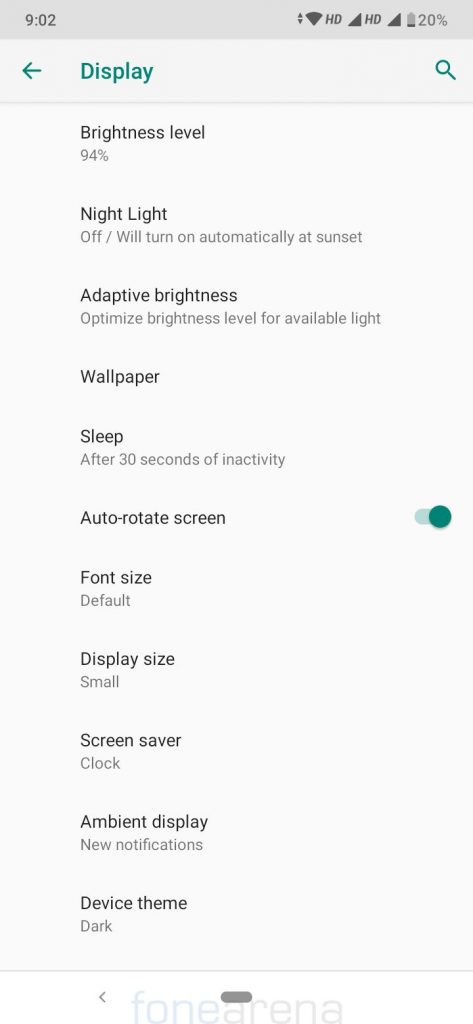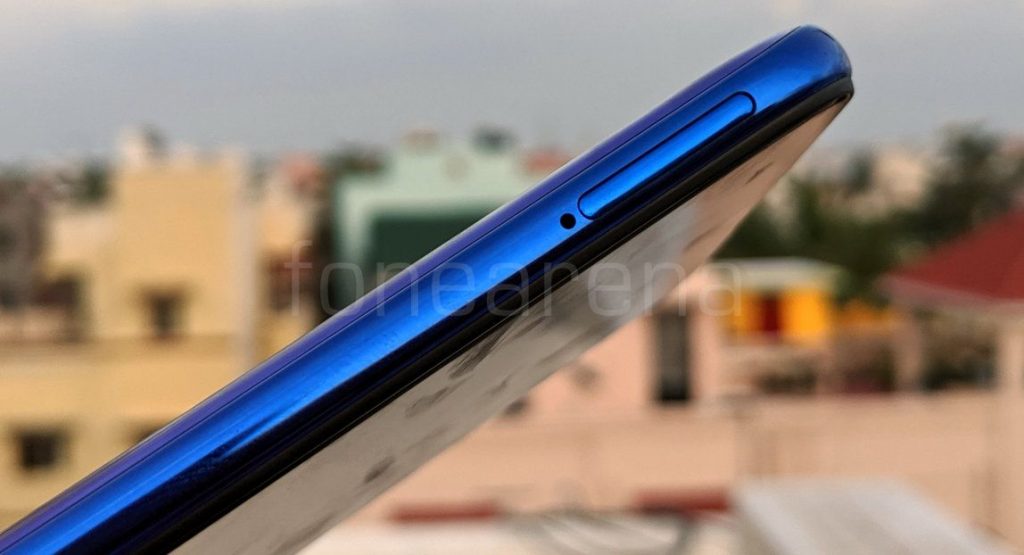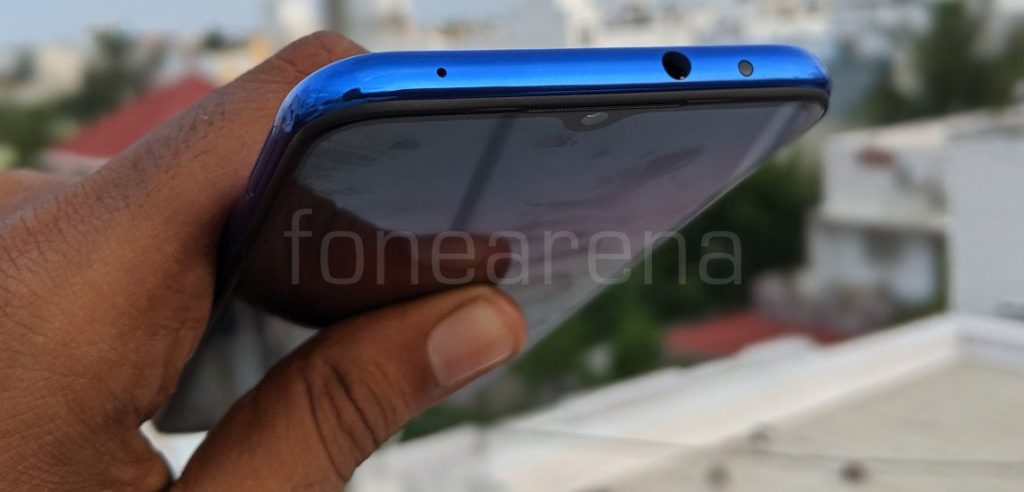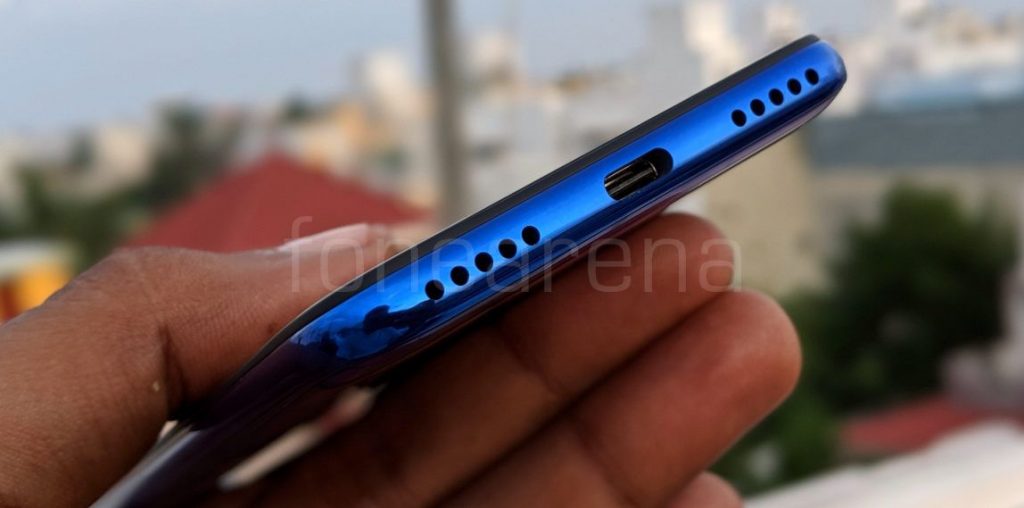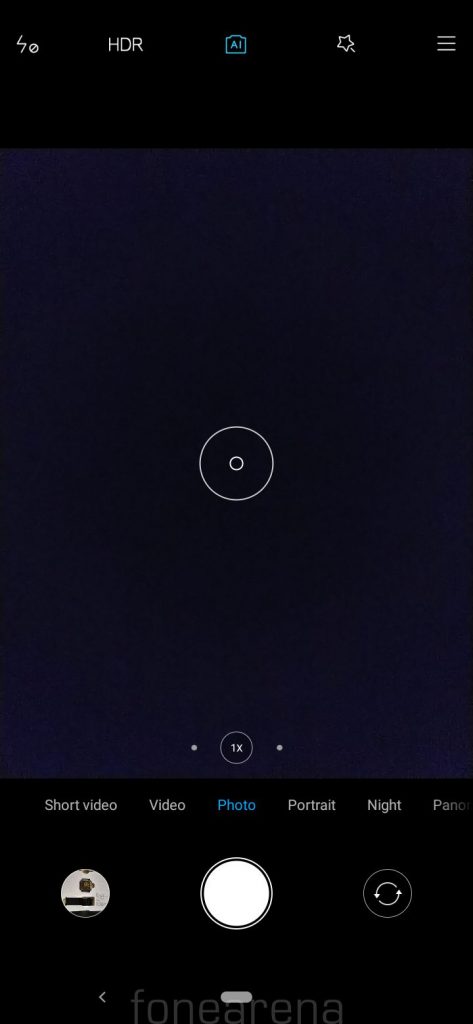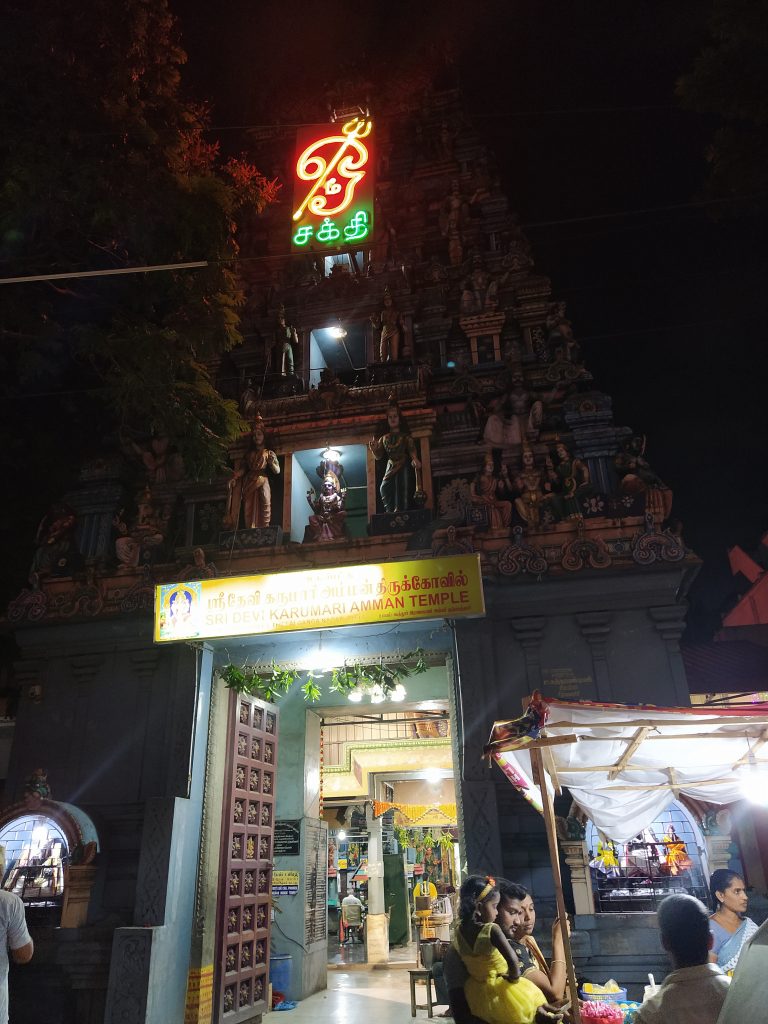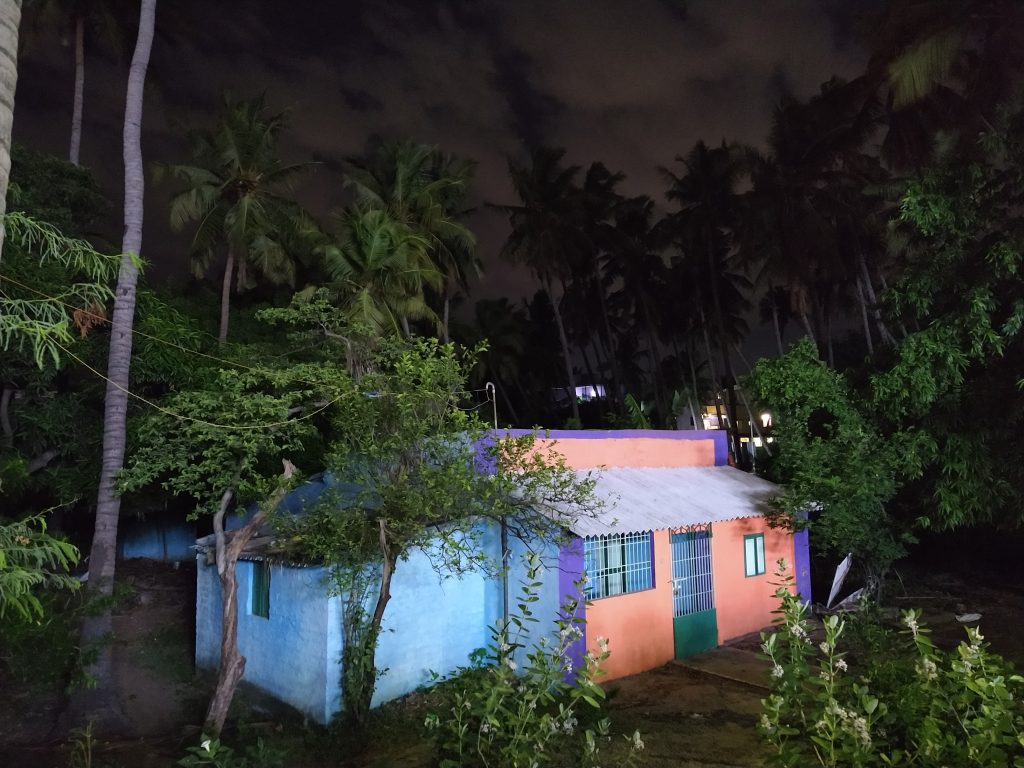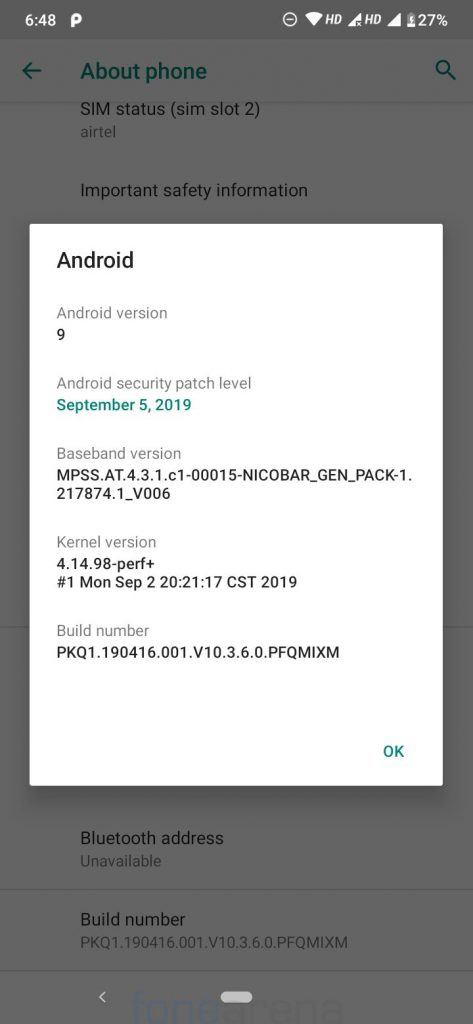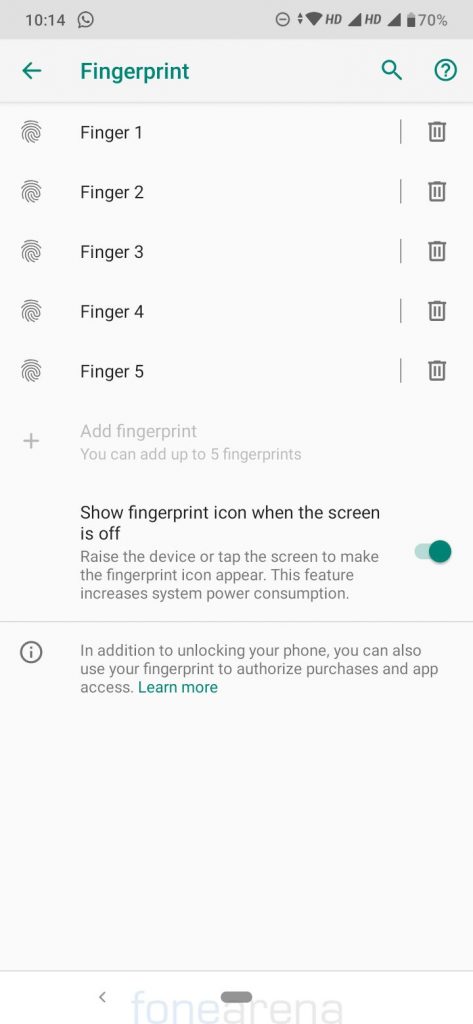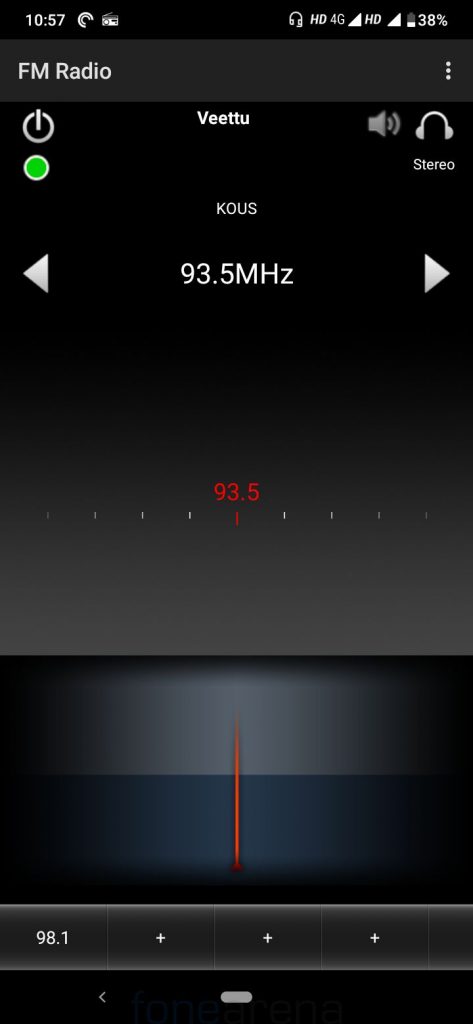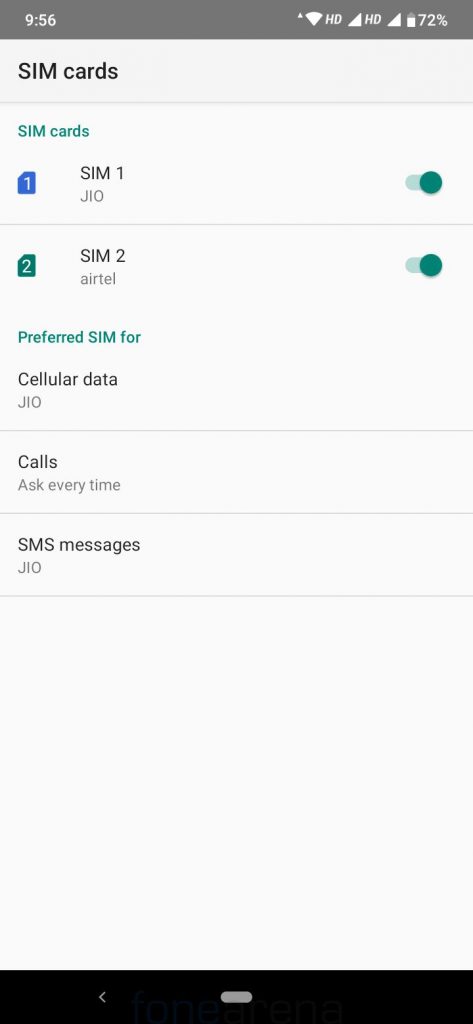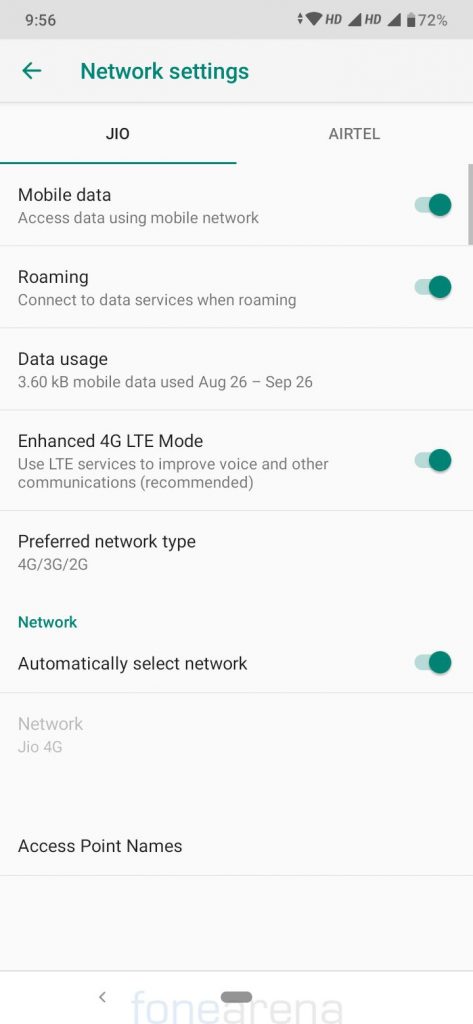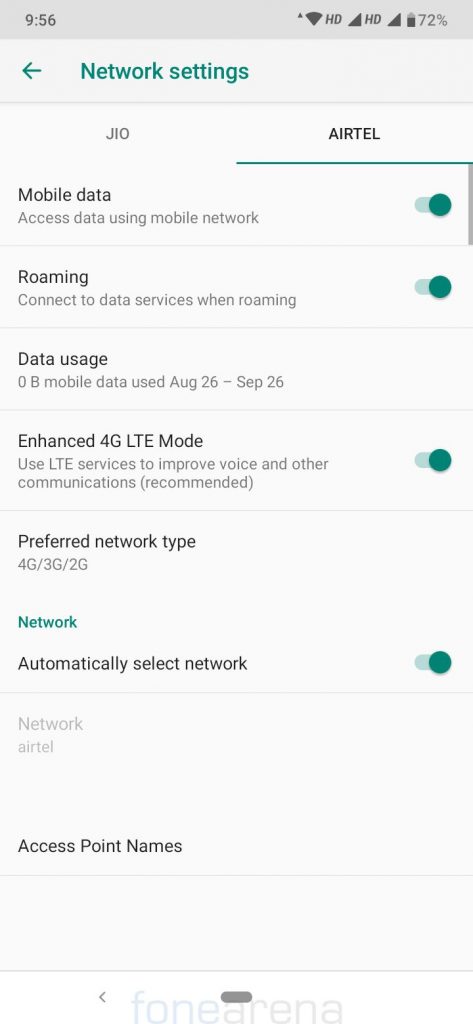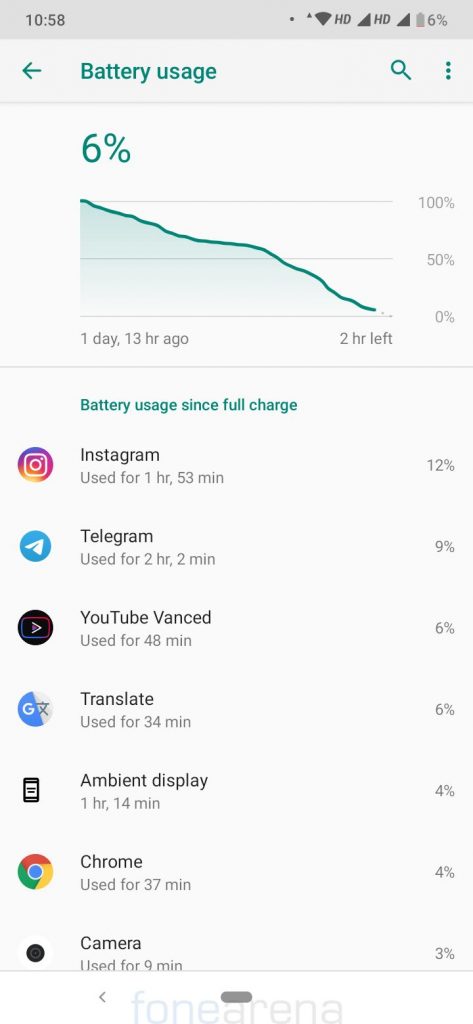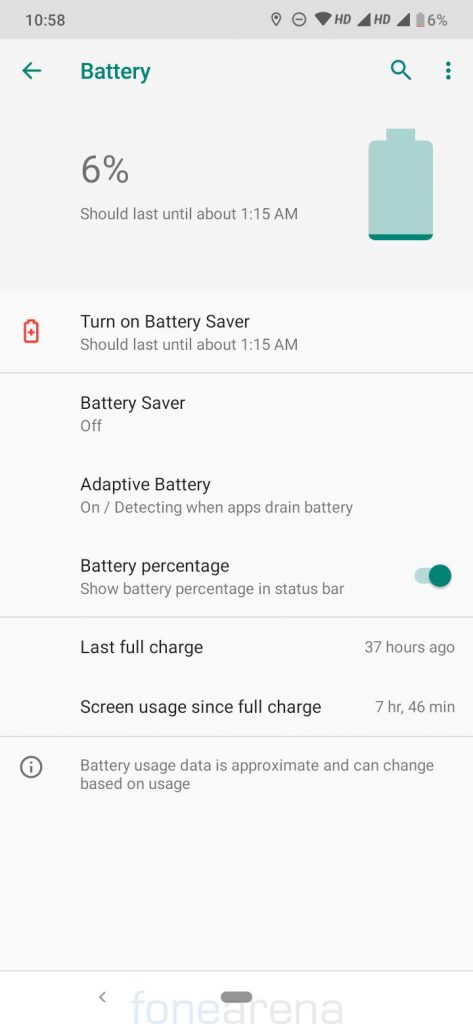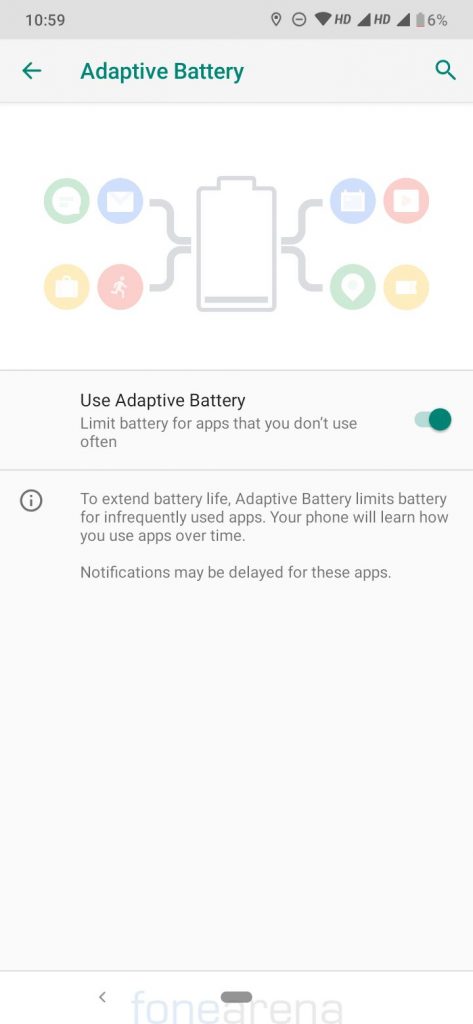
Xiaomi launched its first Android One smartphone – Mi A1 back in 2017, which was originally introduced as Mi 5X in China. Last year, the Mi 6X became the Mi A2 in India, and the third-generation Android One phone from Xiaomi, the Mi A3 is actually the CC9e smartphone that was introduced recently in China recently. Xiaomi has been consistently upgrading the cameras on its Android One phones, and the build quality has also seen improvements, however the latest phone only HD+ screen, even though it’s Super AMOLED. Will this affect the experience? Let us find out in the complete review.
Box Contents
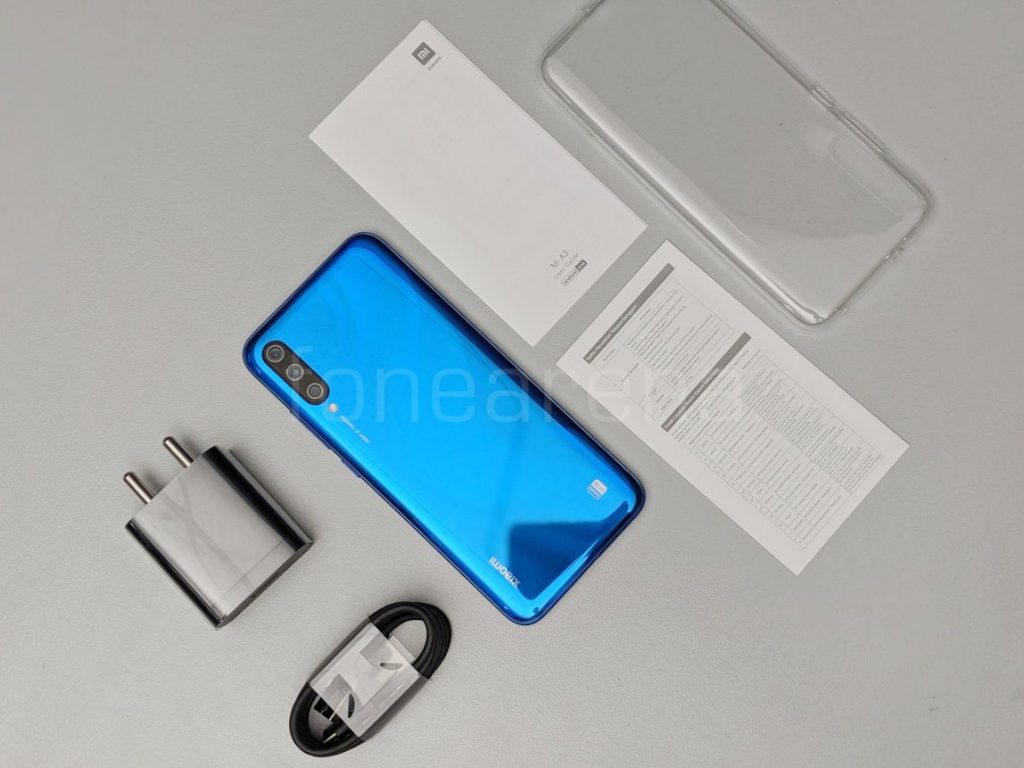
- Mi A3 smartphone 6GB + 128GB version in Not Just Blue color
- 2-pin charger (5V-2A)
- USB Type-C cable
- Clear protective case
- SIM Ejector tool
- User manual and warranty information
Display, Hardware and Design
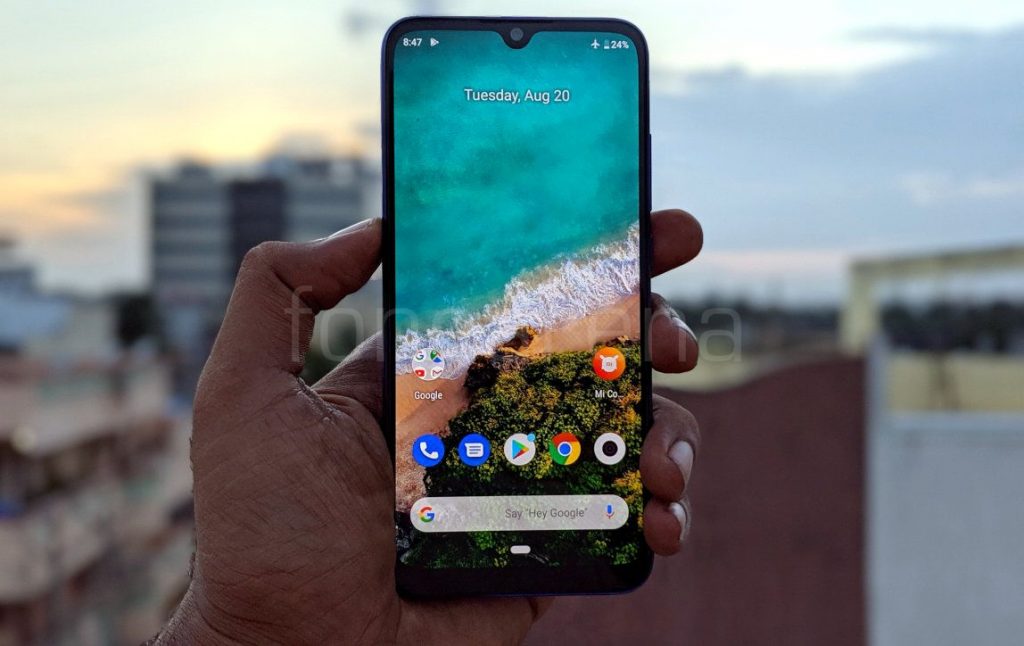
The main change in the Mi A3 when compared to the A2 is its 19.5:9 aspect ratio 2.5D curved glass screen with gentle rounded corners. The A1 and A2 had no-notch screen, but the ‘Dot Notch’ in the A3 is not intrusive. It has a large 6.08-inch HD+ Super AMOLED display with a pixel resolution of 1560 × 720 pixels and a pixel density of about 282 PPI. Since it has a pen tile screen with low resolution, the content doesn’t look sharp compared to FHD+ screens. The display is bright, but it is not as bright as other screens from Xiaomi, which are above 400nit brightness, but there are no issues with outdoor visibility, however it lacks High Brightness Mode present on the Xiaomi phones running MIUI. It has 1500:1 contrast ratio. The colors are vibrant since it has 102.7% of NTSC color gamut. Since this has a 19.5:9 aspect ratio screen, you can pinch to zoom to fill the screen when you use video apps, but the content is cropped.
The phone doesn’t have an option to hide the notch or option to adjust colors and contrast based on your preference like MIUI, but there is night light option, similar to other stock Android phones that lets you reduce the display’s blue light emission so it doesn’t cause eye strain when you are reading at night. There is an option called dark theme, but it only changes the quick settings panel to dark, so you will have to wait for Android 10 to get system-wide dark mode. There is Ambient display option that shows notifications on the dark screen when the phone is locked, but the phone doesn’t have Always on display option like the K20 series. It also has Corning Gorilla Glass 5 protection.
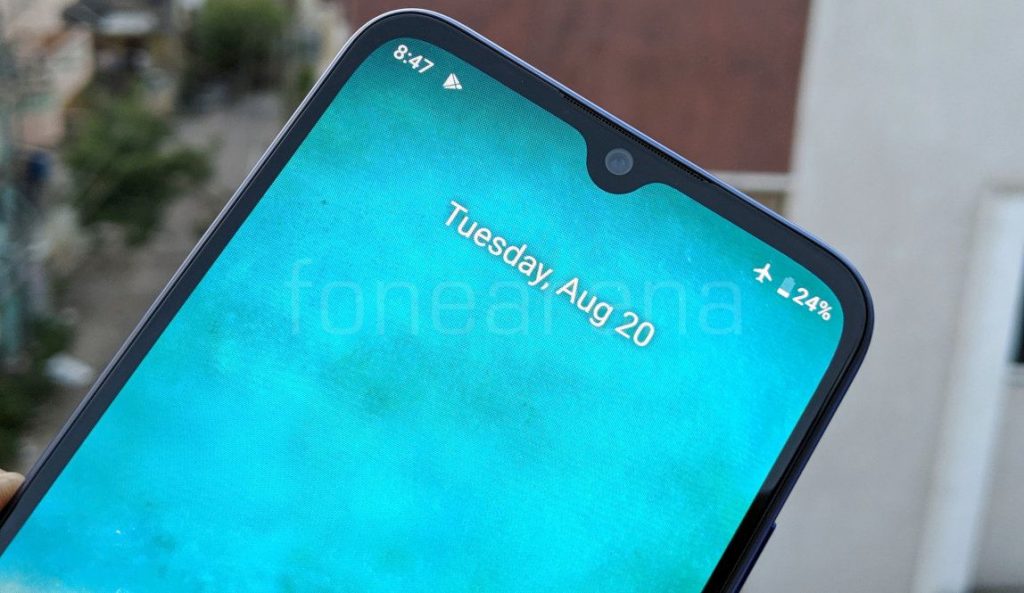
Above the display there is an earpiece on the top edge. The usual set of proximity and ambient light sensors are present on the bezel, but these are hardly visible. It also has a gyroscope and a magnetic sensor, otherwise known as a magnetometer. There is also a 32-megapixel camera on the front with f/2.0 aperture. The company has also added a notification LED on the bezel, which is hardly visible when it’s off. It glows only in white color.
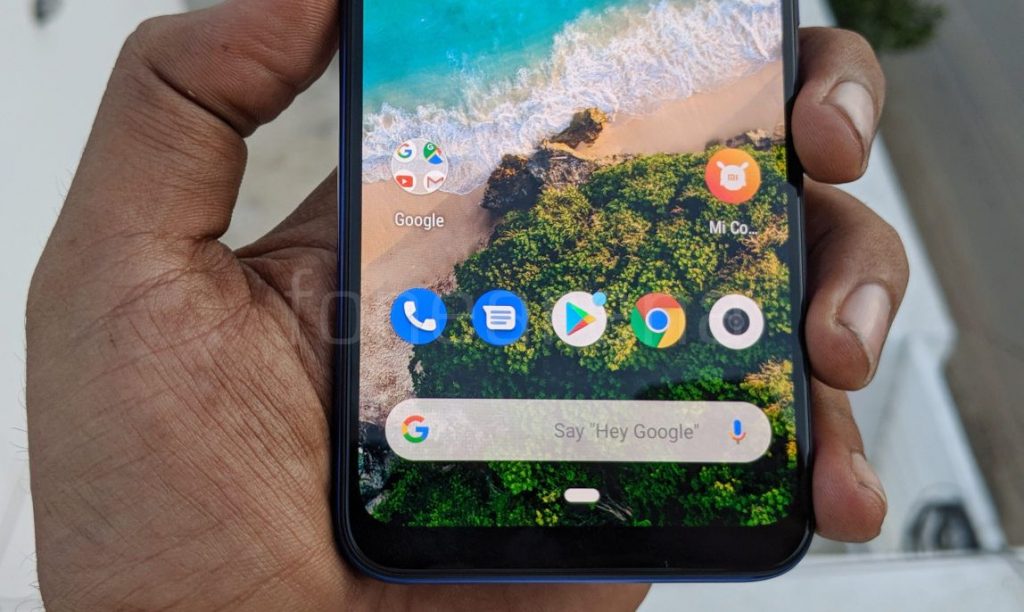
There is a small bezel below the display, which looks slightly bigger than the one on the Redmi Note 7 Pro.
Coming to the button placements and slots, the power button and the volume rockers are present on the rights side, hybrid SIM slot is present on the left side, 3.5mm audio jack, secondary microphone and Infrared sensor are present on the top, while the primary microphone, USB Type-C port and loudspeaker grill are present on the bottom. The phone has a plastic finish on the sides, so there are no issues for the antenna placements.
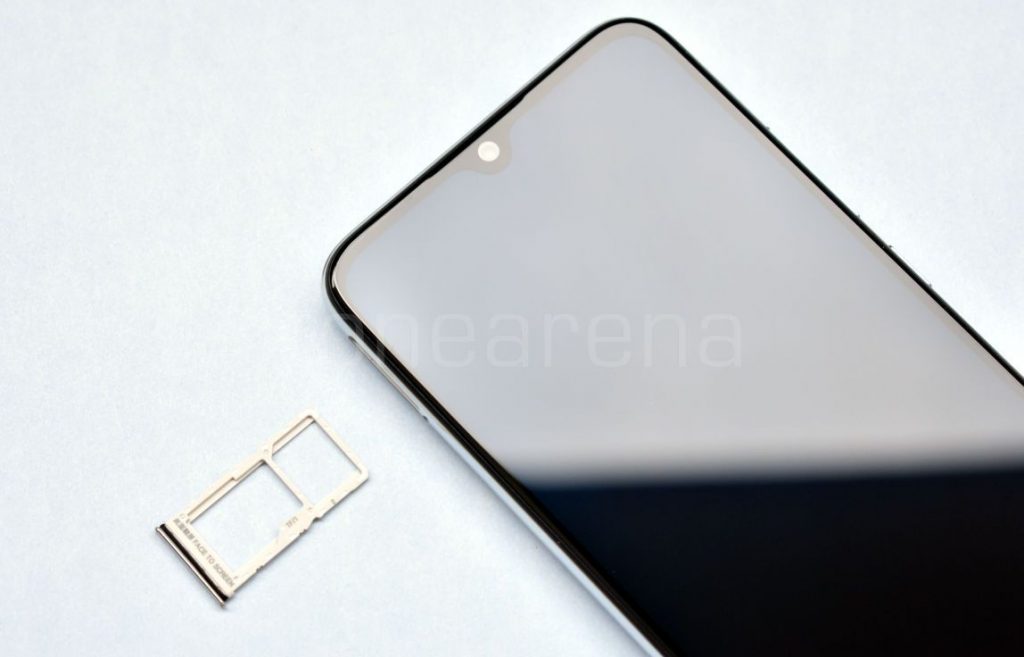
The Mi A2 did not have a microSD slot, but the company has added a Hybrid dual SIM slot for the Mi A3, while some smartphones offer dedicated slots in the price range. This accepts two SIMs or a SIM and a microSD card up to 256GB. The phone is 8.47mm thick compared to 7.3mm thick Mi A2, but it is just 71.85mm wide compared to75.4mm width, even though both have almost same display size.
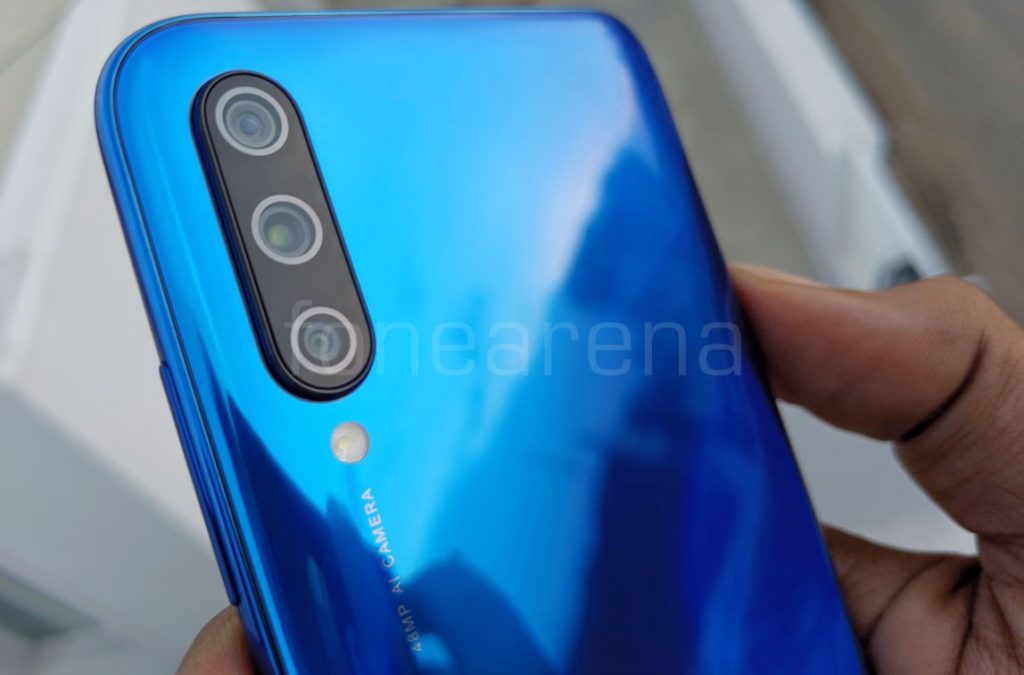
The phone has triple rear cameras that includes a 48MP primary rear camera with 1/2.0″ Sony IMX586 sensor, 0.8μm pixel size, f/1.79 aperture, LED flash, EIS, 8MP 118° ultra-wide angle lens with 1.12μm pixel size, f/2.2 aperture and 2MP depth sensor with 1.75μm pixel size and f/2.4 aperture. There is a considerable camera bump due to the large sensor, and the company said that the camera part also has Corning Gorilla Glass 5 Protection to prevent scratches.
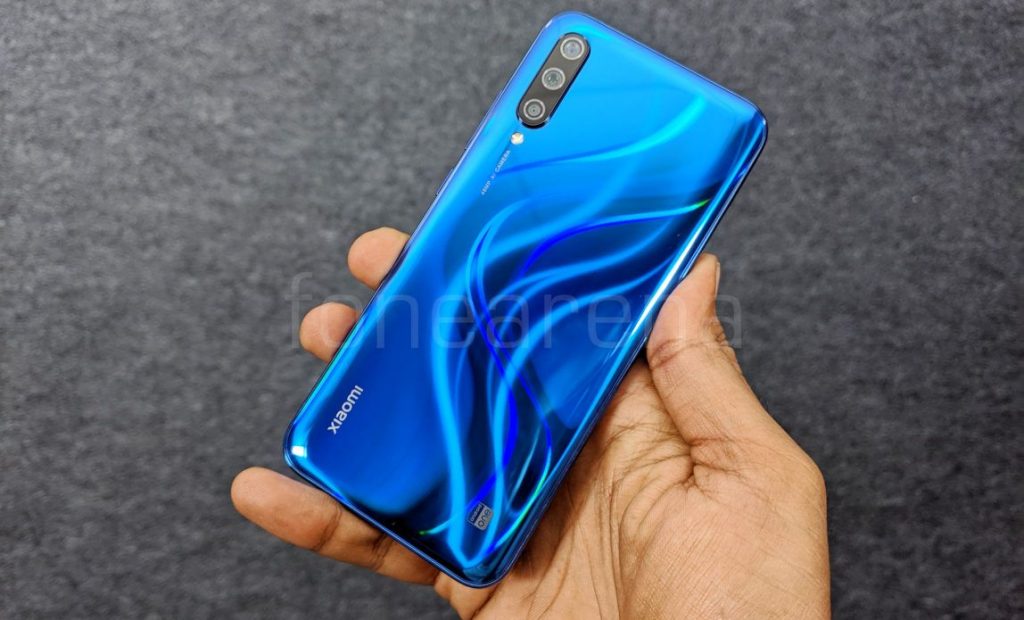
The phone is compact to hold and has about 80% screen-to-body ratio, higher than the predecessor. Unlike the predecessor, this has a new glass back that reflects light and shifts its color as it turns back offering a holographic pattern at certain angles and comes with Corning Gorilla Glass 5 Protection. The phone even has a P2i nano coating similar to most of the latest Xiaomi phones, making it splash proof and it can also withstand light rain, but can’t be immersed in water since it lacks IP ratings. Glass back of the phone attracts fingerprint easily, but it is not slippery to hold. It is recommended to use the bundled protective case to prevent smudges.

The pattern on the back is different on the ‘More than White’ color variant. The weighs 173.8 grams, mainly due to the large battery and a glass back.
Camera
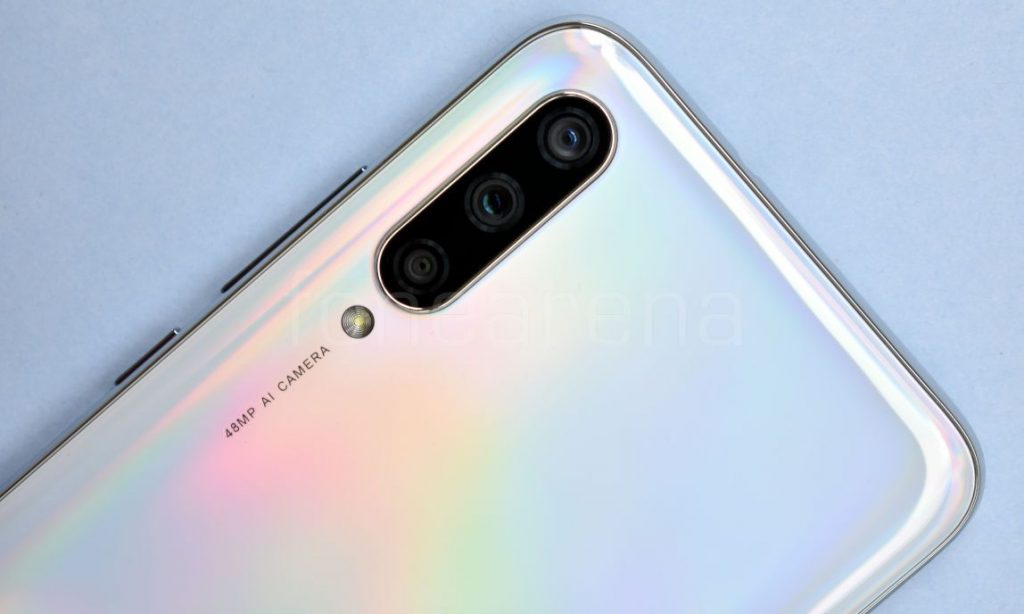
The phone packs a 48-megapixel primary rear camera with single LED Flash, f/1.75 aperture, 1/2.0″ Sony IMX586 sensor, 0.8μm pixel size, 6P lens has support for PDAF, EIS along with a secondary 8-megapixel 118° ultra-wide sensor with 1.12μm pixel size, f/2.2 aperture and an 2-megapixel depth sensor with 1.75μm pixel size and f/2.4 aperture. It has a 32-megapixel front-facing camera with 1/2.8″ Samsung S5KGD1 sensor, 0.8μm pixel size, f/2.0 aperture and 79-degree field of view (FOV).
The camera UI is familiar with other Xiaomi smartphones since it has Mi Camera app. It has with flash, HDR, AI, color modes (Normal, Vivid, Film, Amour, Latte, Sun, Cookie, Calm, Soda, Gourmet, Glow, Berries, B&W and Fade) on the top. Pressing the menu option shows settings, camera frame, timer, tilt-shift, straighten, Google lens and 48MP. There is a front camera toggle on the bottom along with option to select modes such as Short Video, Video, Photo, Portrait, Night, Square, Panorama and Pro mode to adjust white balance, shutter speed (1/1000s to 32 seconds). Beautify option for the front camera lets you adjust several features, in addition to smoothness.

Xiaomi has enabled Cam2API by default first on its ‘A series’ phones out of the box, so users can side load ported Google Camera APKs for advanced editing including RAW capture.
Coming to the image quality, daylight shots came out well with good dynamic range, thanks to the large sensor. HDR shots are better, and macro shots are good as well with good amount of details. 48MP mode that offers a lot of details, but the images are about 14 or 15MB in size. Even though this only has an 8MP 118° ultra-wide sensor compared to 13MP in the K20 series, the wide-angle shots are good. Portrait shots were decent, and the edge detection was good, thanks to the additional sensor. There is also software-based 2x zoom mode, even though there is no telephoto lens.
Low-light shots are good, thanks to 4-in-1 Super Pixel technology that lets the camera’s sensor hardware combine 4 pixels into a single 1.6μm large pixel, and the night mode is even better making the images brighter offering more details, but there is still noise when there is hardly any light. Images with flash are good and the flash is not overpowering.
Coming to the front camera, the large sensor captures more details, offers good dynamic range, thanks to 4-in-1 Super Pixel technology that lets the camera’s sensor hardware combine 4 pixels into a single large pixel, which is good especially in low lighting conditions. Portrait for front camera uses software-based blur, and the edge detection is decent. All the images are captured in 32MP resolution, and there is no option to change it. AI beautify enhances the image. It doesn’t have a selfie flash, and comes with screen flash.
Check out some camera samples (Click the image to view the full resolution sample.).
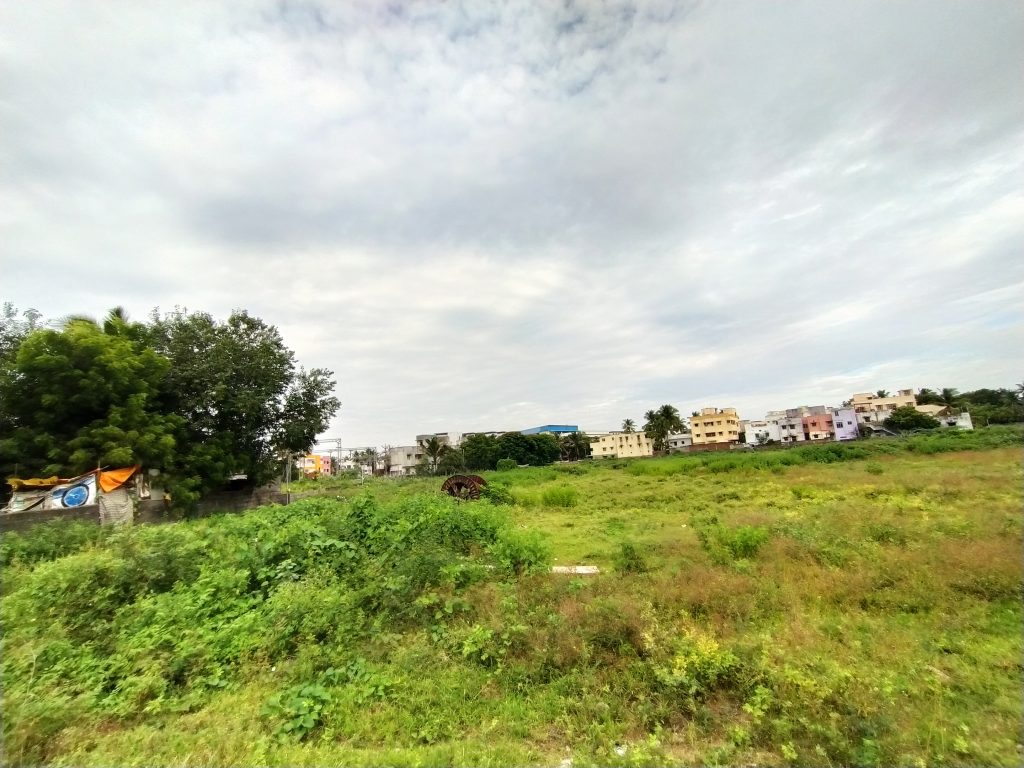
Check out the complete set of Mi A3 samples here. It can record videos at 4k resolution at 30 fps, 1080p at up to 60 fps, and it also has slow motion 720p resolution video recording at up to 240fps. It also has support for EIS for videos, which does its job, but it only works in 1080p at 30fps. Video quality is good and the audio is crisp as well. Check out the video samples below.
Software, UI and Apps
It runs Android 9.0 (Pie) out of the box with Android security update for September, 2019 after the latest update. There is nothing much to say since this is stock Android. You don’t get a lot of features that are available in MIUI 10 such swipe gestures, and other gestures, but Android 10 should bring the gestures. Since it is an Android One smartphone, we can expect Android 10 update soon. The ‘Jump to camera’ gesture can quickly open the camera when you press the power button twice, which works even when the phone is locked. ‘Prevent ringing’ gesture lets you put the phone to vibrate or mute when you press power and volume up button together, which also works when the phone is locked.
Out of 6GB RAM, you get 5.6GB of usable RAM, and about 3GB of RAM is free when default apps are running in the background. Out of 128GB, you get about 107GB of free storage. There is no Cleaner feature like MIUI, but the Google Files app lets you free up space by clearing cache and obsolete files. The phone doesn’t come with any bloatware except for the Mi Camera, and the Mi Store and Mi Community apps, both of which can be uninstalled easily. You also don’t get any ads like the MIUI.
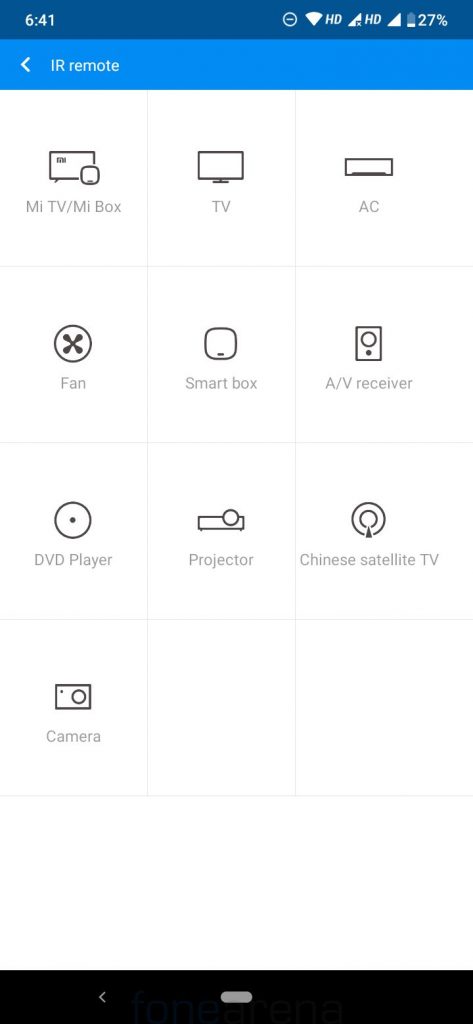
Since the phone has an infrared sensor for remote function, it comes with Mi Remote (needs to be installed from Google Play) that lets you control your home appliances easily. It worked flawlessly with Airtel Set-top box, Samsung TVs and ACs. It also supports A/V receiver, Fan, DVD Player, Projector, Camera, Mi Box and more.
In-display Fingerprint Sensor and Face unlock
This is one of the few phones in the price range to offer an in-display fingerprint scanner. The phone has a seventh generation in-display optical fingerprint sensor with 3P lens that is equivalent to a 7.2μm macro camera, which is 100% higher than the previous generation’s photosensitive area, and the finger area is also increased by 15%, which can capture the fingerprint optical signal better, same as the Redmi K20 series.
In-display fingerprint scanner takes about a second to unlock the phone, but this is slightly faster than the K20 series. It can still be improved through future updates. It doesn’t have any custom animation options like the K20 series. You can enable option to show the fingerprint icon when the screen is off when you raise the device, but this will consume more power says the company. You can add up to 5 fingerprints. As usual, you can also use the fingerprint for app local and payments in apps. The phone also has face unlock, but it is not as secure as fingerprint since it can be unlocked with a photo. It also doesn’t work if you use sunglasses or hats.
Music Player, FM Radio and Multimedia
Google Play Music is the default music player. There is also equalizer. It also has FM Radio with recording, but the UI is basic that you find in most Snapdragon-powered stock Android phone. Audio through the speaker is brilliant, but audio through earphones is not loud even in full volume, should be fixed. The phone comes with Widevine L1 support out-of-the-box so that you can enjoy HD content on Hotstar, Amazon Prime Video, Netflix and other streaming apps, but you don’t see huge difference since the phone has a HD screen.
Dual SIM and Connectivity
It has the usual set of connectivity features such as Wi-Fi 802.11 ac (2.4 + 5GHz), Bluetooth 5, GPS + GLONASS, but lacks NFC. It also has USB OTG support that lets you connect external drives. It has 4G connectivity and also has Voice-over-LTE (VoLTE) support for Reliance Jio, Airtel and others and supports Dual 4G VoLTE that lets you use 4G on both the SIMs. The phone has integrated Snapdragon X12 LTE modem, same as the predecessor.
The dialer and messaging UI are similar to other stock Android phones. Since this is a dual SIM phone, you get the option to select either SIMs when calling or sending a text message. We did not face any call drops and the earpiece volume is good as well.
Performance and Benchmarks

Coming to the performance, this is one of the first phones to be powered by an Octa-Core Snapdragon 665 11nm Mobile Platform, which has 4 x Kryo 260 Performance CPUs (A73-based) clocked at up to 2.0GHz and 4x Kryo 260 Efficiency CPUs (A53-based) at up to 1.8GHz. It has Adreno 610 GPU with support for OpenGL ES 3.2, OpenCL 2.0 full, Vulkan 1.1, DX12 DSP, 4GB / 6GB LPDDR4x RAM and 64GB / 128GB UFS 2.1 storage.This is not a huge improvement from the Snapdragon 660, but the 11nm fabrication compared to 14nm in the predecessor offers better efficiency.
Gaming performance with Adreno 610 GPU is decent, but it is not optimized well, so games like PUBG doesn’t work in HD, while Snapdragon 660 powered phones with Adreno 512 GPU has it. This should be possible in future updates It gets a bit warm on intensive gaming and 4G data use since it has a glass back, but it doesn’t get too hot to handle. That said, check out some synthetic benchmark scores below.

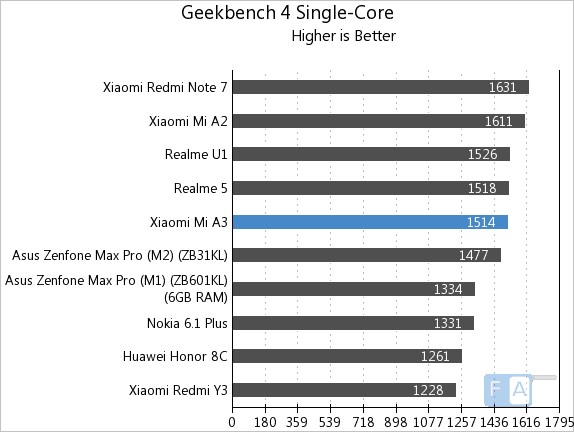
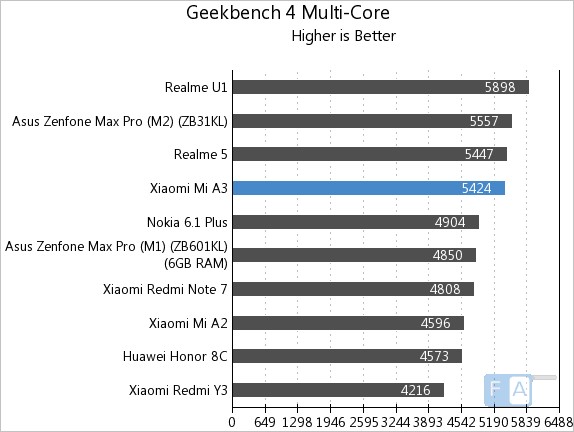
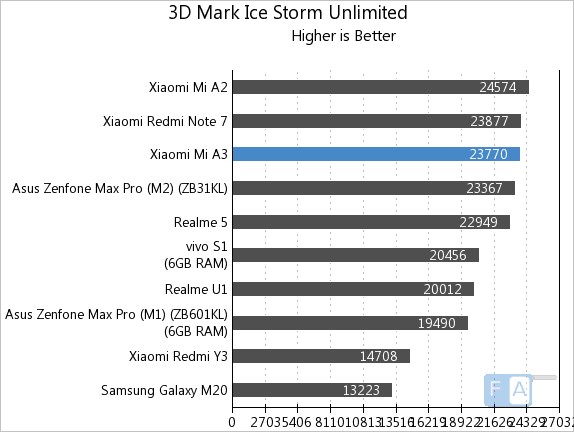
Battery life
Coming to the battery life, the 4030mAh (typical) / 3940mAh (minimum) built-in battery offers good battery life. It lasts for a day even with heavy use and a bit more with average use, and I got close to 8 hours of screen on time (SOT) in one and half days on a single charge. The adaptive battery limits battery for apps that you don’t use, offering improved battery life. Since the phone has support for Quick Charge 3.0, it takes about 1 hour and 45 minutes to charge it from 0 to 100%, and 0 to 50% takes 42 minutes with the 18W charger. Wish the company had bundled an 18W charger in the box since the 10W charger takes about two and half hours for full charge.
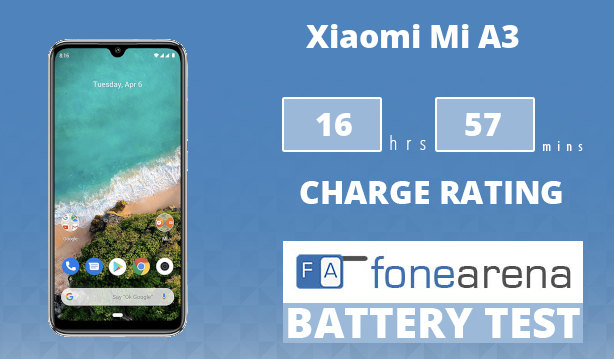
It achieved One Charge Rating of 16 hours and 57 minutes in our battery test, which is good for a phone with a 4030mAh battery, but a Xiaomi phone with MIUI and similar specifications should be better due to optimization. Android 10 should improve the battery life.
Conclusion
At a starting price of Rs. 12999, the Mi A3 is a good Android One phone, but not a complete successor to the Mi A2 mainly due to the display, which is a compromise to keep the cost low since other specs are worth the price. Also, MIUI 10 has high brightness mode for better sunlight legibility, which the stock Android lacks.
It has good cameras, impressive build quality with splash resistant body, promising battery life with support for fast charging and the stock Android experience is good. It has a 6-inch Super AMOLED screen, but the pen-tile HD+ resolution screen doesn’t look impressive if you are used to phones with FHD+ screen. A good quality LCD FHD+ screen and a rear-mounted fingerprint scanner would have been a better choice.
Competition
The latest Motorola One Action is another Android One phone in the similar price range which gives a tough competition in the similar price range. Even the Nokia 8.1 is a better deal after the recent price cut, and is available for as low as Rs. 14,999 during offer period.
Availability
The Xiaomi Mi A3 is priced at Rs. 12,999 for the 4GB RAM with 64GB storage version and the 6GB RAM with 128GB storage version costs Rs. 15,999. It is available from Amazon.in, Mi.com and Mi Home Stores through open sale.
Pros
- Good cameras
- Good build quality
- Good battery life
- Stock Android without any bloatware
- Splash-resistant (P2i coating) body
Cons
- Only HD+ display
- Audio output through 3.5mm jack is low
- Glass back is prone to fingerprints
- Hybrid Dual SIM might not be preferred by everyone
Photography by Arpit and Bharadwaj

